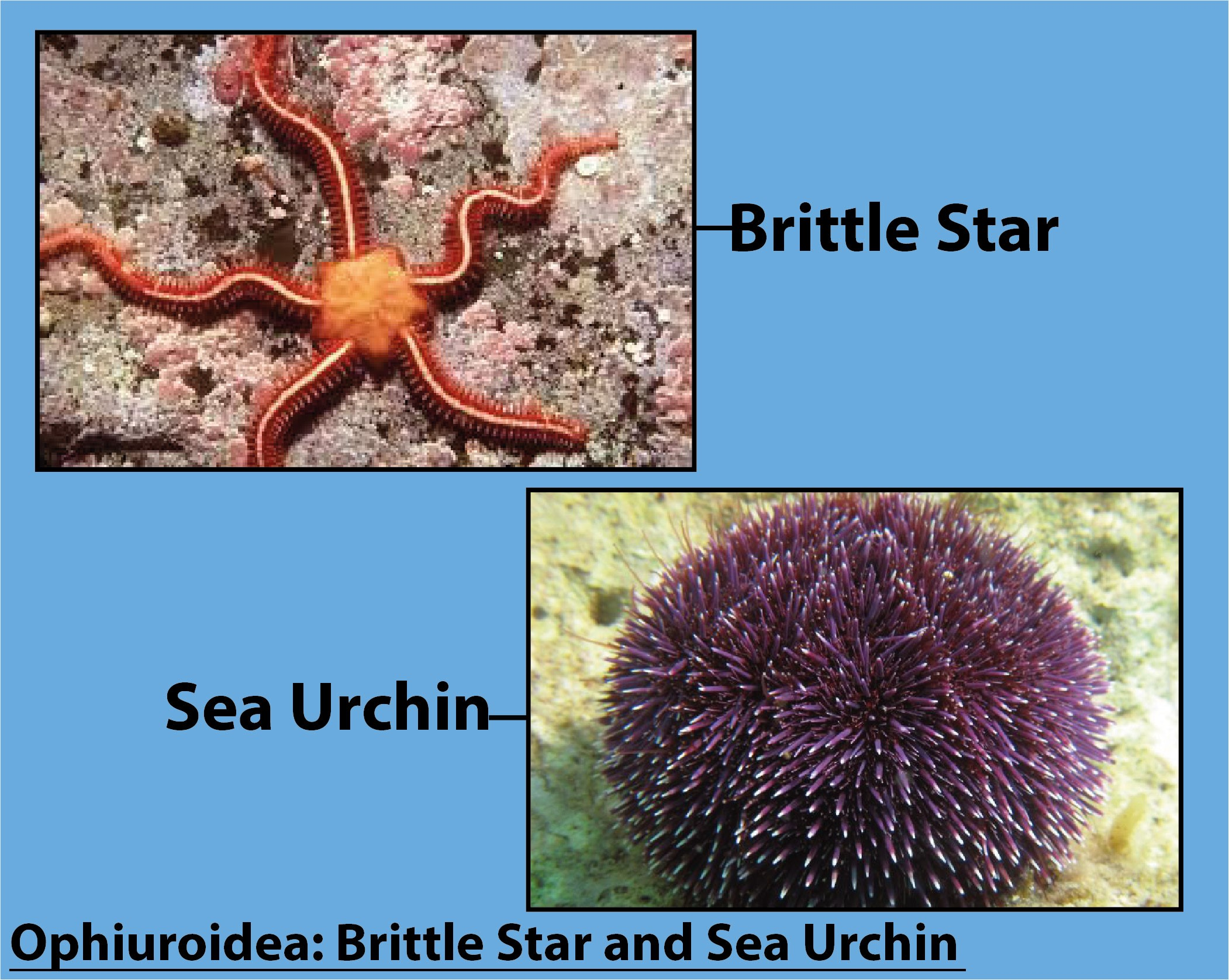
Ambulacral grooves are absent in the living forms of the class
(a)Crinoidea
(b)Ophiuroidea
(c)Asteroids
(d)Echinodermata
Answer
548.7k+ views
Hint: organisms belong to this class have pentaradial body symmetry. The excretory system is replaced by a water vascular system in the organism of this class.
Complete answer:
Ambulacral grooves are absent in the living forms of the class Ophiuroidea. These are replaced by ossicles in the animals belonging to the class Ophiuroidea. Ambulacral grooves extend from the mouth to the end of each ray or arm of the animal. In each ambulacral groove of every arm, four rows of hollow tube fees that can be extended or withdrawn are present. The ambulacral groove is found in the phylum Echinodermata or class Asteroidea, Edrioasteroidea, and Crinoidea.
Additional Information: -The ambulacral groove has many cilia and hydraulically driven tube feet to manipulate captured food down the groove. Through the groove, the food is brought down to the mouth via arms. The mouth is situated at the tegmen which is positioned at the base of the arms.
-The Ophiuroidea possesses a skeleton of calcite made up of calcium carbonate. An internal skeleton of calcium carbonate plates known as vertebral ossicles supports the animal body.
-These vertebrae are controlled by muscles and are connected through the ball in the socket.
-Ossicles are found in various forms and also in different arrangements in sea urchins, starfish, brittle stars, sea cucumbers, and crinoids.
So, the correct answer is ‘Ophiuroidea’
Note: -In Echinodermata, the larval forms show bilateral symmetry whereas the adult forms show radial symmetry.
-They are triploblastic animals having true coelom.
-Ossicles are found embedded in the dermis of the body wall of echinoderms. They provide rigidity and protection to the animal and also form part of the endoskeleton.

Complete answer:
Ambulacral grooves are absent in the living forms of the class Ophiuroidea. These are replaced by ossicles in the animals belonging to the class Ophiuroidea. Ambulacral grooves extend from the mouth to the end of each ray or arm of the animal. In each ambulacral groove of every arm, four rows of hollow tube fees that can be extended or withdrawn are present. The ambulacral groove is found in the phylum Echinodermata or class Asteroidea, Edrioasteroidea, and Crinoidea.
Additional Information: -The ambulacral groove has many cilia and hydraulically driven tube feet to manipulate captured food down the groove. Through the groove, the food is brought down to the mouth via arms. The mouth is situated at the tegmen which is positioned at the base of the arms.
-The Ophiuroidea possesses a skeleton of calcite made up of calcium carbonate. An internal skeleton of calcium carbonate plates known as vertebral ossicles supports the animal body.
-These vertebrae are controlled by muscles and are connected through the ball in the socket.
-Ossicles are found in various forms and also in different arrangements in sea urchins, starfish, brittle stars, sea cucumbers, and crinoids.
So, the correct answer is ‘Ophiuroidea’
Note: -In Echinodermata, the larval forms show bilateral symmetry whereas the adult forms show radial symmetry.
-They are triploblastic animals having true coelom.
-Ossicles are found embedded in the dermis of the body wall of echinoderms. They provide rigidity and protection to the animal and also form part of the endoskeleton.

Recently Updated Pages
Master Class 12 Business Studies: Engaging Questions & Answers for Success

Master Class 12 Economics: Engaging Questions & Answers for Success

Master Class 12 English: Engaging Questions & Answers for Success

Master Class 12 Maths: Engaging Questions & Answers for Success

Master Class 12 Social Science: Engaging Questions & Answers for Success

Master Class 12 Chemistry: Engaging Questions & Answers for Success

Trending doubts
What is meant by exothermic and endothermic reactions class 11 chemistry CBSE

Which animal has three hearts class 11 biology CBSE

10 examples of friction in our daily life

One Metric ton is equal to kg A 10000 B 1000 C 100 class 11 physics CBSE

1 Quintal is equal to a 110 kg b 10 kg c 100kg d 1000 class 11 physics CBSE

Difference Between Prokaryotic Cells and Eukaryotic Cells




